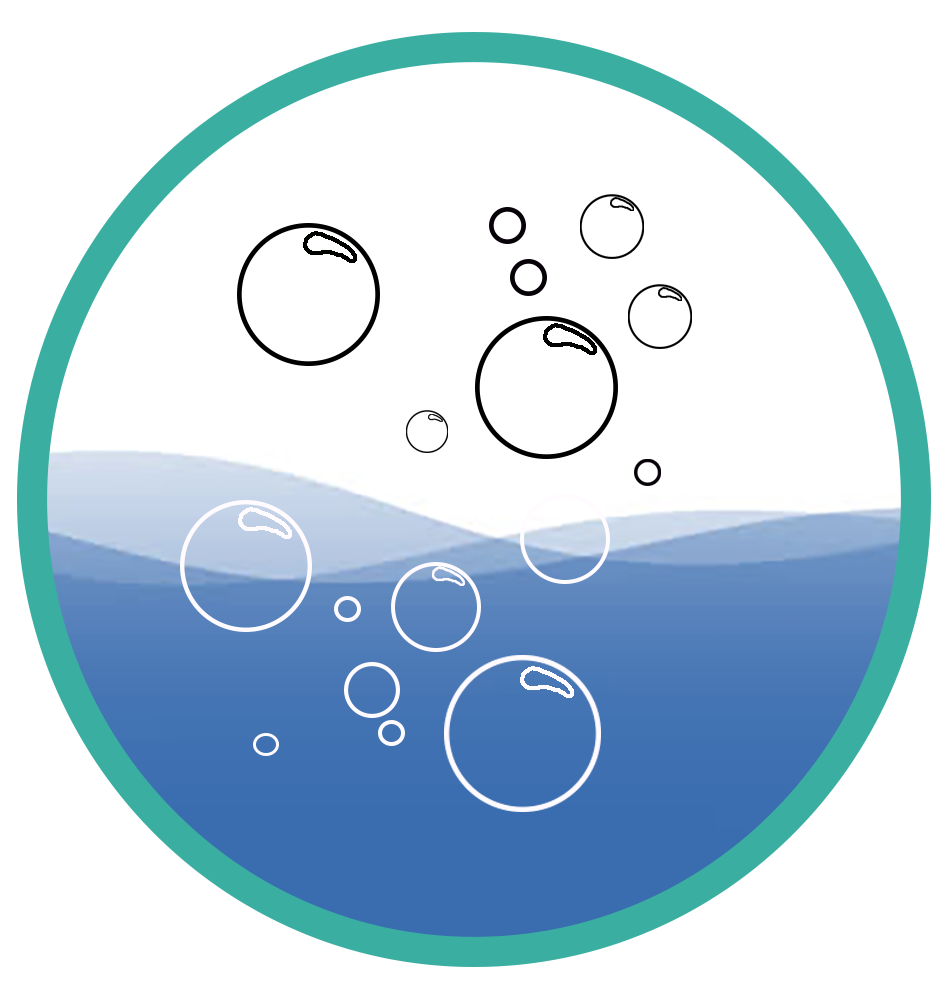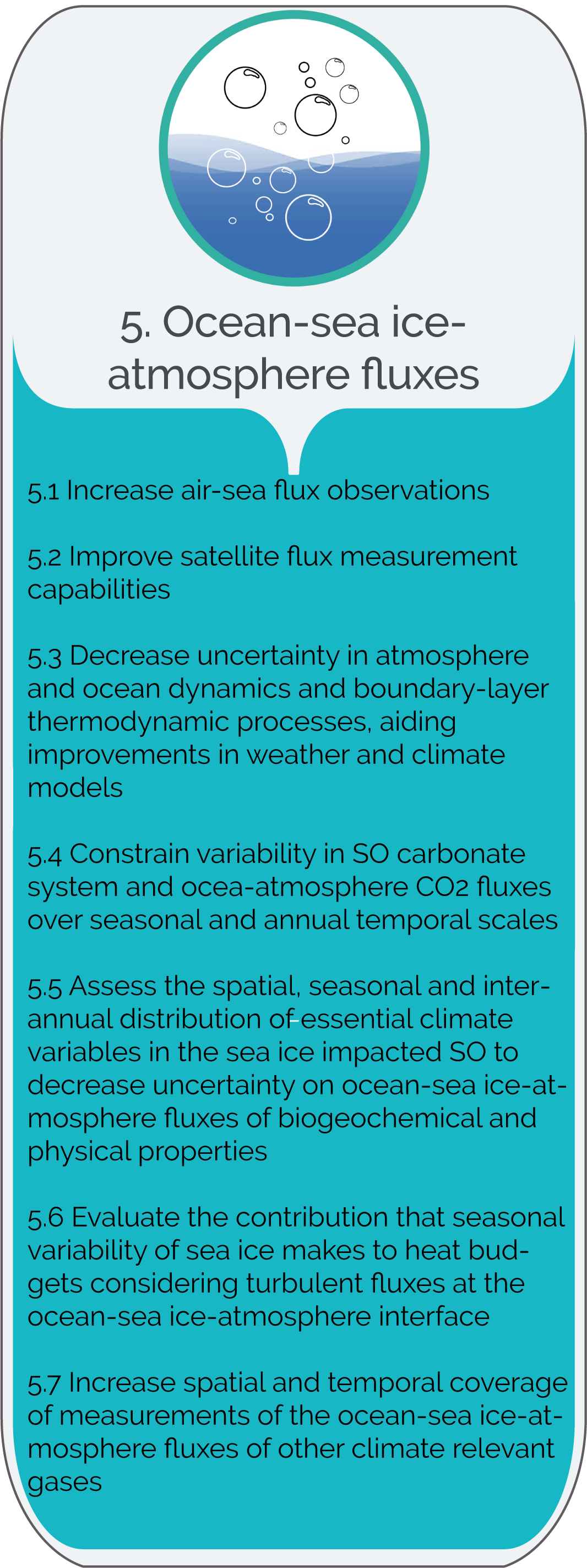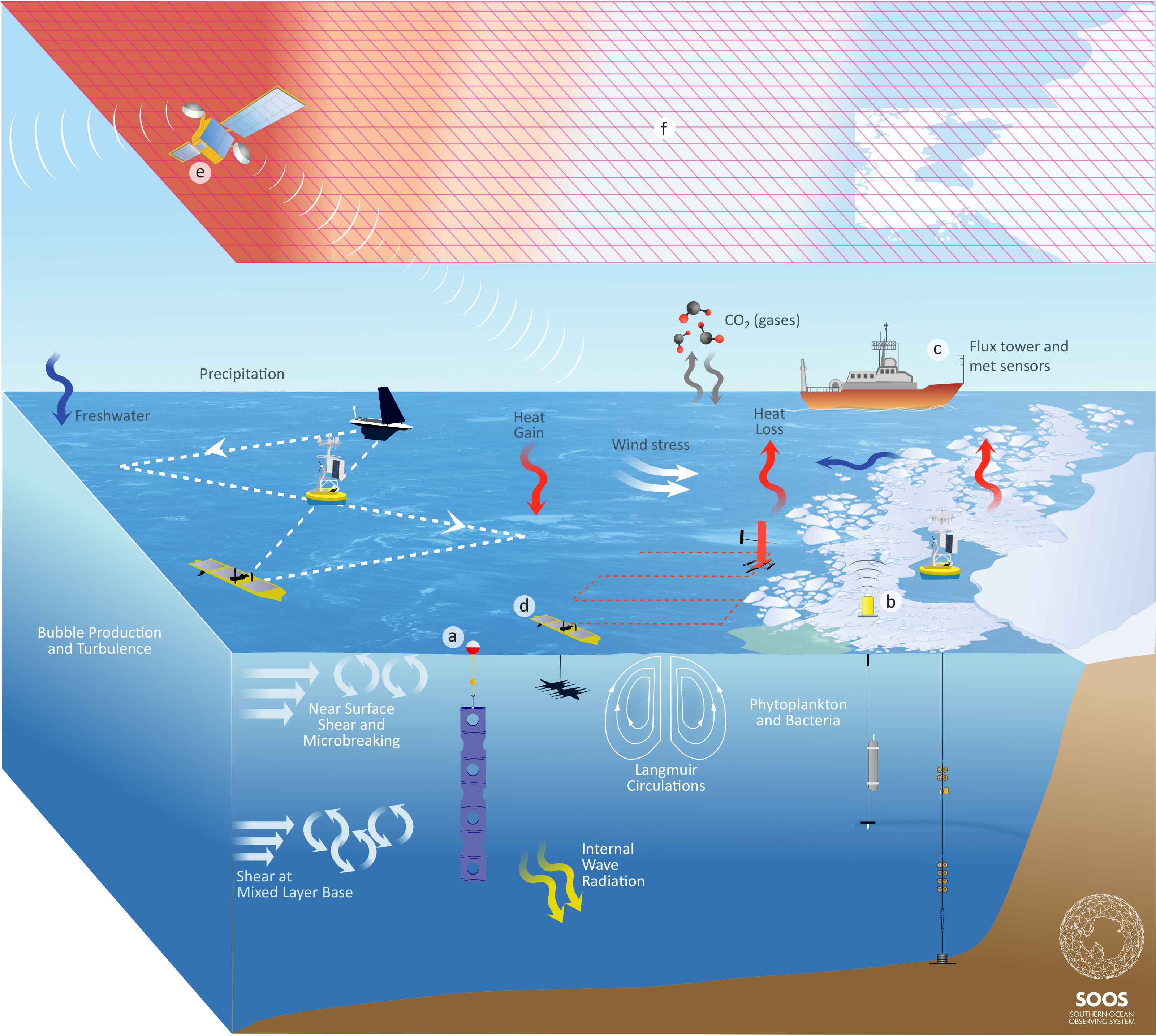
Science Theme 5: Ocean-Sea Ice-Atmosphere Fluxes

Understanding and quantifying the state and variability of the Southern Ocean - sea ice - atmosphere fluxes
Theme 5 integrates across the other Themes through its focus on fluxes across the ice-ocean-atmosphere interfaces and the implications for physical, biogeochemical and biological exchanges. These fluxes manifest in each of Theme 1-4, as well as throughout this cross-cutting Theme, reflecting the integrated nature of the system. Southern Ocean fluxes of heat, freshwater, carbon and important climate-relevant gases (such as CO2) are key components of the global ocean and climate system.
Attribution of the processes leading to increased Southern Ocean heat uptake is currently lacking, mainly because in situ measurements of the ocean-atmosphere turbulent fluxes are sparse and often non-existent. This has led to a knowledge gap that increases uncertainty in atmosphere and ocean dynamics and boundary-layer thermodynamic processes, limiting improvements in weather and climate models. No less important is understanding how the fluxes of CO2 and other climate-relevant trace gases (e.g., N2O, CH4, DMS and isoprene) behave at the ocean-ice-atmosphere interface of the Southern Ocean. Considerable uncertainty remains, due to the lack of measurements spatially and temporally and the variety of methodologies used to obtain the fluxes.
Progress in addressing these challenges requires international agreement on effective and best practice methodologies, priorities on observations (essential climate variables and sites) and observational strategies. It is essential to have a robust observation system operating year round as many observation points are made only during spring and summer. The absence of a year-round observational system greatly reduces the chances of sampling the seasonal behavior of fluxes and essential climate variables, along with the extreme short-term events which are often missed by bulk formulas for the Southern Ocean. These will ultimately lead to reduced bias between direct observations and bulk formulas. Improved flux estimates across both the ice-free and ice-covered Southern Ocean will need to identify and improve observing system design as well as take advantage of ships, coastal research stations, surface moorings, and the growing capabilities of autonomous platforms such as Saildrones and Wave Gliders.
Key Science Challenges
5.1: Increase air-sea flux observations with emphasis on:
-
Varying conditions imposed by wind patterns, storms and sea state
-
Regions and times (winter) of high uncertainty in reanalysis products
-
Areas covered by sea ice and influenced by polynyas/leads
5.2: Improve satellite-derived air-sea flux measurement capabilities:
-
Develop reliable retrievals of ocean-sea ice-atmosphere turbulent heat fluxes, especially in high winds and sea state
-
Improve freshwater flux retrievals for regions with variable ice-induced freshwater inputs
5.3: Decrease uncertainty in atmosphere and ocean dynamics and boundary-layer thermodynamic processes, aiding improvements in weather and climate models, including ocean waves, ocean mixed-layer turbulence, atmospheric boundary layer physics, cloud condensation nuclei and ice nucleating particles
5.4: Constrain variability in Southern Ocean carbonate system and ocean-atmosphere CO2 fluxes over seasonal and annual temporal scales
5.5: Assess the spatial, seasonal and interannual distribution of essential climate variables in the sea ice impacted Southern Ocean (e.g., the marginal sea ice zone) to decrease uncertainty of ocean-sea ice-atmosphere fluxes of biogeochemical and physical properties
5.6: Evaluate the contribution that seasonal variability of sea ice makes to heat budgets, considering turbulent fluxes at the ocean-sea ice-atmosphere interface
5.7: Increase spatial and temporal coverage of measurements of the ocean-sea ice-atmosphere fluxes of climate relevant gases other than CO2 (e.g., N2O, CH4 , DMS, halogens, Isoprene)

Addressing Challenges
Delivery of the knowledge and scientific outputs that will address these challenges is carried out by SOOS alone, but by many community efforts, including the programs and projects of SCAR and SCOR, among others. SOOS will not duplicate the efforts of these programs, but will support them where appropriate, to enhance the collection and delivery of the required data. Click below for a list of key community efforts to address these challenges:







